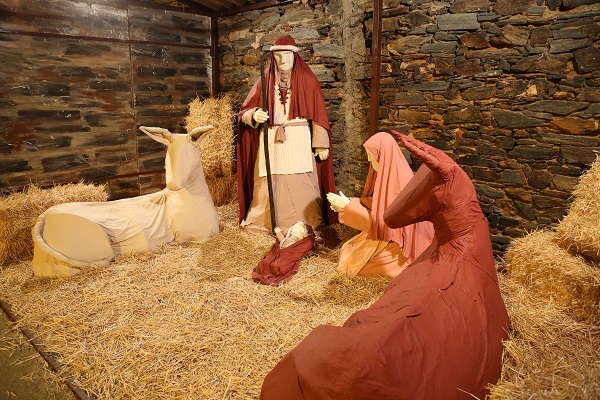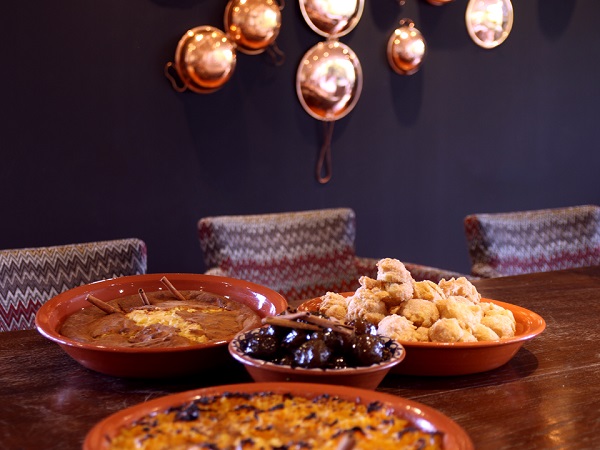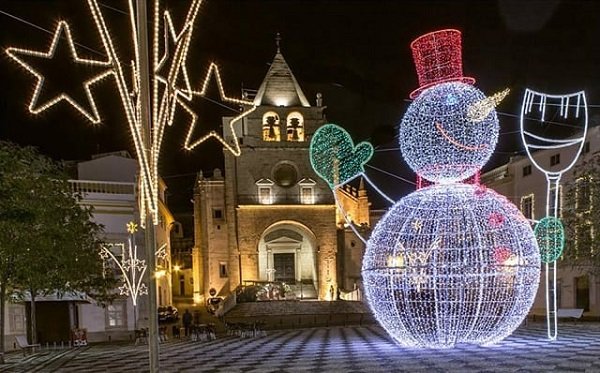The Holidays are a magical time of the year and in Portugal, the season has a special flavor. Everywhere streets are lit up, extravagant nativity scenes are recreated in some towns, and the pleasant winter temperatures allow people to enjoy time outside at Holiday fairs with attractions, or pop-up markets selling local cheeses, jams and other delicacies.
The holiday traditions are part of the landscape in Portugal's largest region, the Alentejo. Christmas and the end of the year in the Alentejo is celebrated in a very special way with peace and tranquility, and modern gift shopping taking a back seat. The Alentejo is one of the most authentic regions in Portugal.
From early December, local residents start to place wood in the main squares of the region's villages and towns. On the night of December 24, a giant bonfire is lit to "illuminate the birth of Christ." It is a spontaneous event that is held throughout the Alentejo. In some towns, such as Castelo de Vide, the bonfire is lit on New Year's Eve.
Christmas in Alentejo: While the wood smolders, local residents gather around, sharing past tales or chatting about the harvests. And local wine will warm both conversations and the body. In towns like Barrancos, folks stay around the fire until it is time to head to the Missa do Galo, the midnight mass that celebrates the birth of Jesus.
So many towns have bright lights decorating their streets, there are towns and villages that offer special decorations, like Monsaraz. The walled village is transformed into a life sized creche, with scenes of the life of Christ throughout the town.


The Janeiras is a holiday time tradition where a group of people stroll the streets of a town singing in the new year. Because they happen in early January the songs are called Janeiras – after Janus, ancient god of the entryway to heaven — and it is believed that the tradition came from Roman times to ward off evil spirits at the beginning of the year — a time of mysticism that the Romans held sacred. To the modern eye it is not unlike Christmas caroling, with a group of friends or neighbors, sometimes with instruments, singing from house to house.
It is common to provide a donation to these groups as a form of appreciation. This activity takes place throughout the Alentejo, mainly in cities such as Évora, Elvas, Terrugem, Redondo and Vila Viçosa.
For visitors seeking a true Alentejo Christmas there are street festivals, special dishes in eateries, and holiday markets. Some examples of places where you can taste classic Christmas dishes are the restaurants O Fialho, in Évora, A Escola, near Alcácer do Sal, and the culinary offerings at Pousadas de Portugal in Alentejo.
On Christmas Eve folks across the Alentejo eat boiled cod, followed by the traditional sweets and wine.


On the 25th, the festivities continue. Stuffed turkey is served with sausages. Desserts include coscorão (made from wheat flour with eggs that, after being fried, are put in sugar syrup) or carolo, an Alentejo cookie. Also part of this season is Bolo Rei (King’s Cake) – a round cake with nuts and crystallized fruit that is "mandatory” on all Holiday tables although only a few people actually enjoy eating it. Traditionally, each cake hides a small silver figure and a dried fava bean, and whoever gets the slice with the bean has to pay for the cake next year. As for the silver toy, it brings good luck to the person who finds it on their plate. However, due to being a safety hazard, pastry shops are no longer allowed to sell King’s Cakes that follow this tradition.



